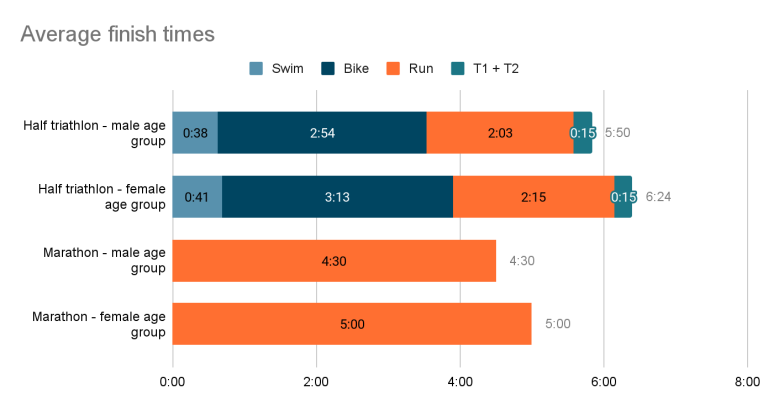How to Use Kinesiology Tape to Reduce Swelling
To reduce swelling using kinesiology tape, apply with proper tension and direction following professional guidance. Kinesiology tape helps alleviate swelling through improved circulation and lymphatic drainage while providing structural support.
Swelling reduction can be achieved by correctly applying kinesiology tape, enhancing blood flow and lymphatic drainage to reduce fluid build-up in the affected area. By utilizing kinesiology tape strategically on the swollen region, individuals can experience relief and improved recovery from injuries or inflammation.
Understanding the proper techniques for applying kinesiology tape is essential in leveraging its benefits for reducing swelling effectively.

Credit: www.performancehealthacademy.com
What Is Kinesiology Tape?
Kinesiology tape is a flexible, elastic adhesive tape that is used to support and stabilize muscles and joints without restricting the body’s range of motion. It is designed to mimic the skin’s elasticity, allowing for a full range of motion while providing support to the targeted area. The tape is made of cotton fibers with an acrylic adhesive that is hypoallergenic and latex-free, making it safe for use on a wide range of individuals.
Benefits Of Kinesiology Tape
- Reduces swelling
- Relieves pain
- Improves circulation
- Enhances proprioception
- Supports injured muscles and joints
How Kinesiology Tape Works
Kinesiology tape works by lifting the skin and alleviating pressure on the lymphatic drainage channels, allowing for better drainage of excess fluid from the affected area. This alleviates swelling and inflammation while promoting faster healing. The tape also provides sensory feedback to the brain, which can help improve proprioception and enhance muscle function. This, in turn, can reduce the risk of further injury and promote better overall movement patterns.
Understanding Swelling
Understanding Swelling:
Before diving into how kinesiology tape can reduce swelling, it’s crucial to understand the underlying causes and symptoms of swelling.
Causes Of Swelling:
- Injury: Trauma or injury to tissues can lead to swelling.
- Inflammation: Inflammatory responses can cause fluid accumulation.
- Circulatory Issues: Poor circulation can result in fluid retention.
Symptoms Of Swelling:
- Pain: Swelling is often accompanied by pain or discomfort.
- Stiffness: Swollen areas may feel stiff or rigid.
- Discoloration: Skin discoloration can indicate swelling.
Kinesiology Tape For Swelling
Discover the effectiveness of using kinesiology tape for reducing swelling in various conditions. Learn how this innovative method can provide relief and support to swollen areas.
How Kinesiology Tape Reduces Swelling
Kinesiology tape works by lifting the skin and allowing for better circulation and lymphatic drainage, which helps reduce swelling and inflammation.
Suitable Applications For Swelling
- Sports injuries: Kinesiology tape can be used to manage swelling from sports-related injuries.
- Post-surgery: It is effective in reducing postoperative swelling and promoting faster recovery.
- Joint inflammation: The tape can provide relief for swelling in joints affected by conditions like arthritis.
Applying Kinesiology Tape
Applying kinesiology tape can be an effective way to reduce swelling and provide support to injured muscles or joints. By following the proper preparation and application steps, you can maximize the benefits of kinesiology tape for swelling reduction.
Preparation For Application
To ensure the best results when applying kinesiology tape, follow these preparation steps:
- Ensure the skin is clean and free of any lotions or oils that could affect the tape’s adhesion.
- Shave or trim any excessive hair in the area where the tape will be applied to promote better adhesion.
- Measure and cut the appropriate length of kinesiology tape, rounding the edges to prevent peeling.
Step-by-step Application Process
Follow these steps for effective application of kinesiology tape to reduce swelling:
- Clean the skin in the target area with mild soap and water, then dry thoroughly.
- Apply any necessary pre-wrap or adhesive spray to help the tape adhere better to the skin.
- Position the affected limb or joint in the desired position to reduce swelling or support the injured area.
- Begin by anchoring the tape with no stretch, and gradually apply the tape with the desired amount of stretch for support and swelling reduction.
- Smooth the tape on the skin to activate the adhesive and enhance the tape’s effectiveness.
- Avoid overstretching the ends of the tape to prevent the tape from lifting or causing irritation.
Tips And Precautions
Using kinesiology tape can be an effective way to reduce swelling and promote healing, but it’s important to keep a few tips and precautions in mind to ensure you get the most out of your treatment. By following these guidelines, you can maximize the effectiveness of kinesiology tape while minimizing the potential risks.
Maximizing The Effectiveness Of Kinesiology Tape
When applying kinesiology tape to reduce swelling, there are a few steps you can take to maximize its effectiveness:
- Clean and dry the area: Before applying kinesiology tape, make sure the area is clean and dry to ensure proper adhesion. This will help the tape stick better and prevent it from coming off prematurely.
- Stretch the tape properly: To activate the lifting effect of the tape and reduce swelling, it’s important to stretch the tape correctly. Gently stretch the tape to about 50-75% of its maximum stretching capacity before applying it to the skin.
- Apply with proper tension: When applying the tape, be sure to apply it with the right amount of tension. Too much tension can cause discomfort and restrict circulation, while too little tension may not provide the desired effect. Find a balance that feels comfortable yet supportive.
- Leave enough time for the tape to adhere: After applying the kinesiology tape, give it some time to adhere to the skin. This usually takes around 30 minutes to an hour. Avoid moving the taped area excessively during this time to prevent the tape from peeling off.
- Keep the tape dry: Water can compromise the adhesive properties of kinesiology tape. To ensure that the tape stays in place and remains effective, avoid exposing it to excessive moisture. If you need to shower or swim, consider covering the taped area with a waterproof cover or using a specialized waterproof tape.
Potential Risks And Precautions
While kinesiology tape is generally safe to use, it’s important to be aware of potential risks and take precautions to avoid any complications:
- Allergic reactions: Some individuals may have an allergic reaction to the adhesive used in kinesiology tape. If you notice any redness, itching, or skin irritation after applying the tape, remove it immediately and consult a healthcare professional.
- Skin irritation: In some cases, prolonged use or improper application of kinesiology tape can lead to skin irritation. If you experience any discomfort, redness, or blistering, discontinue use and consult a healthcare professional.
- Incorrect application: Proper application of kinesiology tape is crucial to get the desired benefits. If the tape is applied too tightly, it can restrict blood flow and cause additional swelling or discomfort. Make sure to follow the instructions or seek professional guidance if you’re unsure.
- Medical advice: If you have any underlying medical conditions or are unsure about the suitability of kinesiology tape for your specific situation, consult a healthcare professional before using it.

Credit: m.youtube.com

Credit: m.youtube.com
Frequently Asked Questions For How To Use Kinesiology Tape To Reduce Swelling
How Does Kinesiology Tape Work?
Kinesiology tape works by gently lifting the skin, allowing for improved circulation and reduced swelling in the affected area.
Can Kinesiology Tape Be Used For Joint Pain?
Yes, kinesiology tape can be used to provide support and alleviate joint pain by reducing inflammation and providing stability to the affected joint.
Is Kinesiology Tape Safe For Sensitive Skin?
Kinesiology tape is generally safe for sensitive skin, but it’s important to test a small patch first and consult with a healthcare professional if you experience any adverse reactions.
Conclusion
Incorporating kinesiology tape into your routine can effectively reduce swelling and provide support. By following the proper application techniques and understanding its benefits, you can maximize its effectiveness. Whether you’re an athlete or dealing with everyday swelling, kinesiology tape offers a simple and natural solution to alleviate discomfort and improve mobility.






